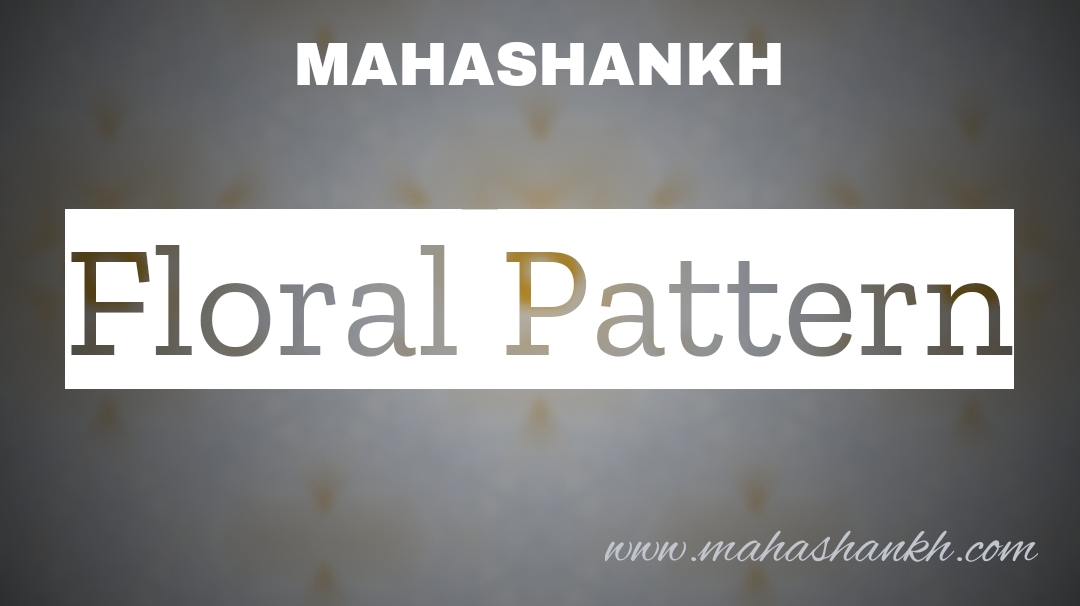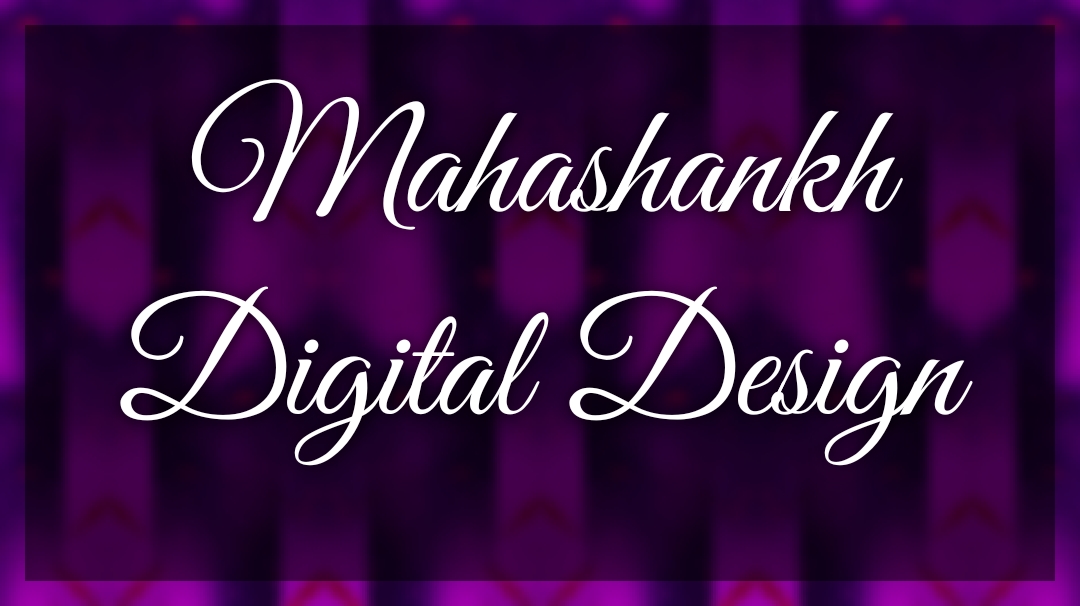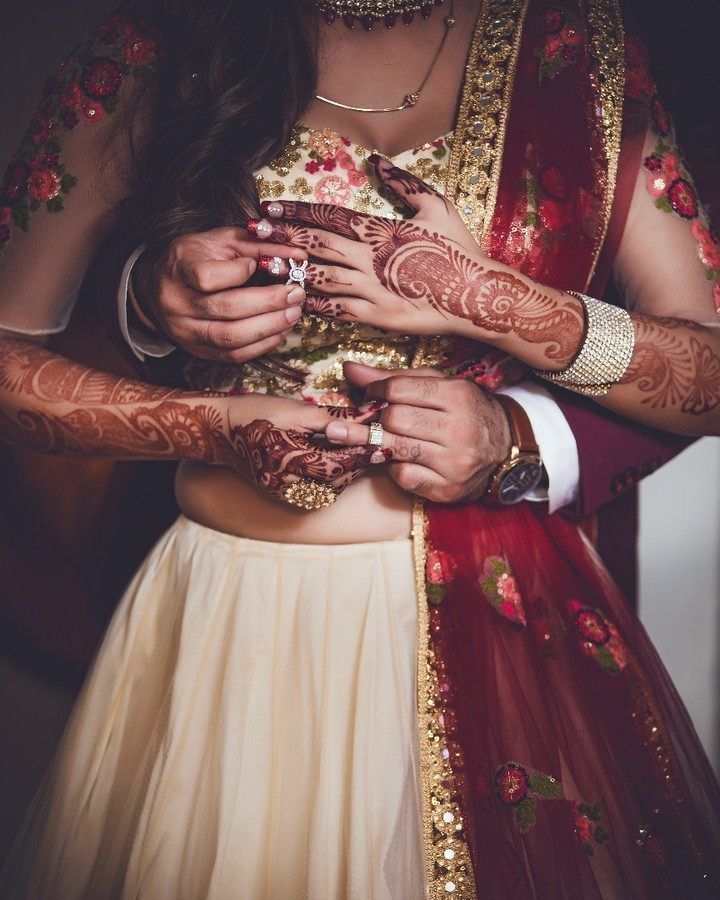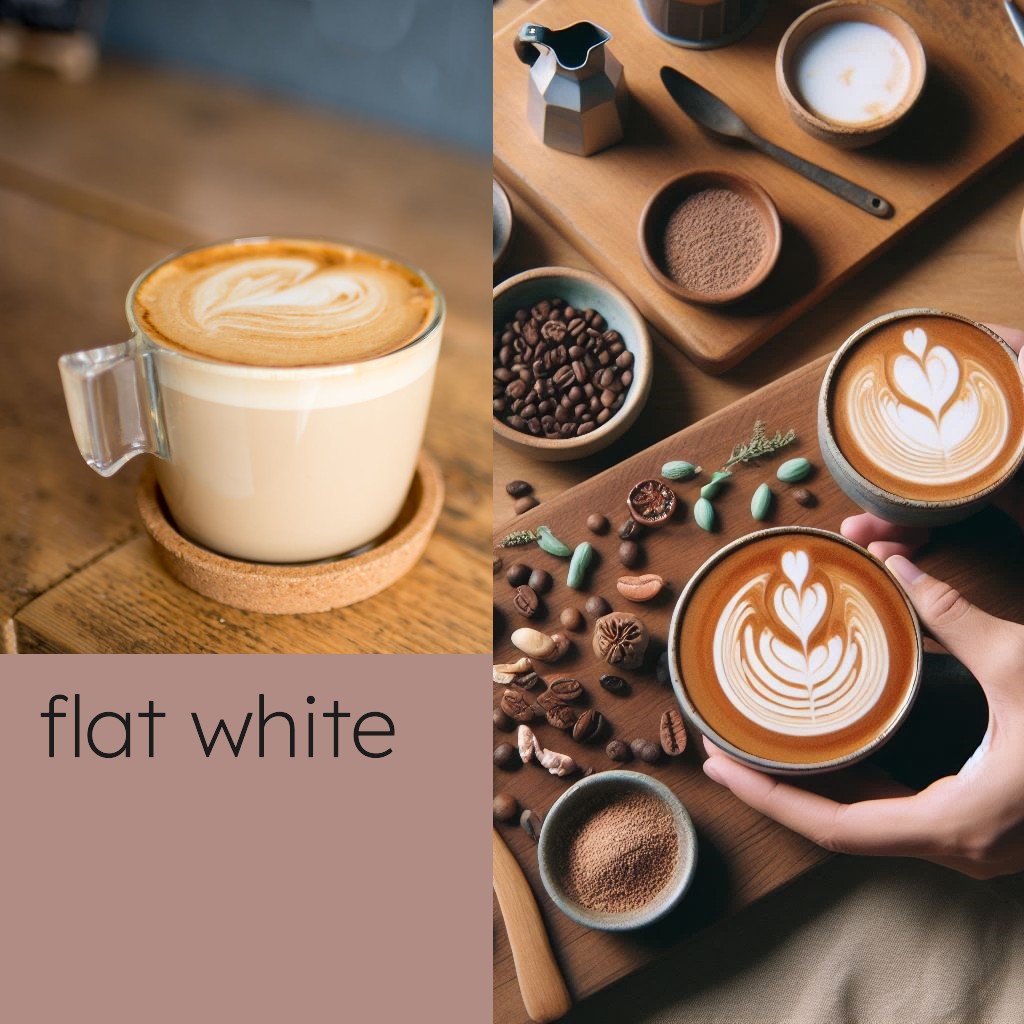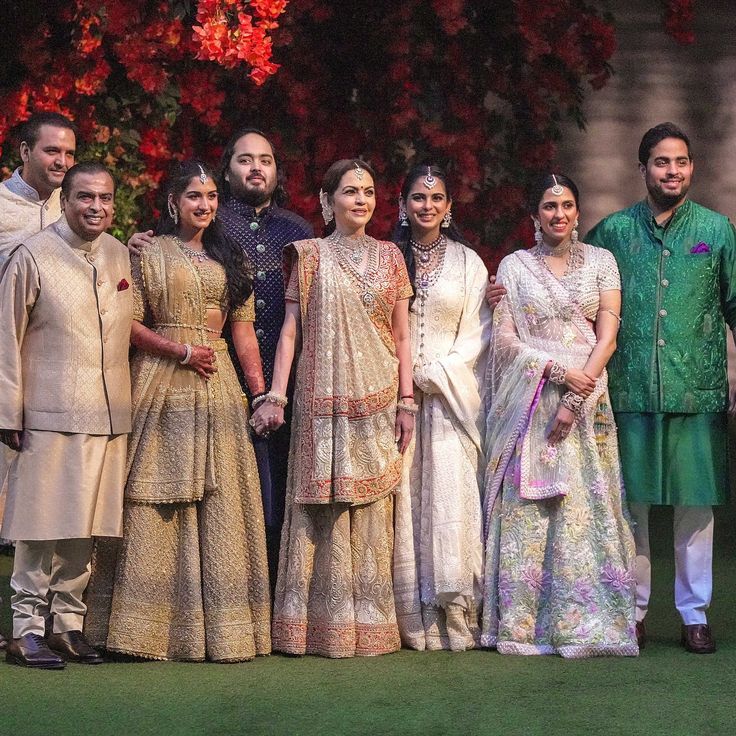The Timeless Beauty of Floral Patterns: A Delightful Fusion of Nature and Design
From fashion and home decor to art and textiles, floral patterns have remained a beloved choice, transcending trends and eras. This article explores the charm and versatility of floral patterns, tracing their historical significance and highlighting their contemporary relevance.
A Blossoming History:
The history of floral patterns can be traced back centuries, with civilizations across the globe incorporating floral motifs into their art and design. In ancient Egypt, lotus flowers and papyrus reeds adorned walls and textiles, symbolizing rebirth and fertility. The delicate cherry blossoms of Japan, known as sakura, have long been celebrated for their ephemeral beauty and have inspired countless artistic creations. During the Renaissance period, floral patterns became a prominent feature in European tapestries and decorative arts, signifying opulence and luxury.
Symbolism and Meaning:
Floral patterns have a rich symbolism attached to different types of flowers, allowing them to convey nuanced meanings. Roses, with their velvety petals, have been associated with love and passion. Sunflowers, with their vibrant yellow hues, symbolize happiness and vitality. Lilies, often depicted in religious art, represent purity and devotion. From dainty daisies to exotic orchids, each flower carries its own significance, enabling floral patterns to evoke emotions and narratives.
Versatility in Design:
One of the remarkable aspects of floral patterns is their versatility, effortlessly adapting to different design contexts. In fashion, floral prints can range from bold and vibrant to subtle and delicate, adorning dresses, skirts, blouses, and accessories. Home decor embraces floral patterns through wallpapers, upholstery fabrics, and decorative accents, adding a touch of natural splendor to living spaces. Floral motifs also grace ceramic ware, table linens, and even technological gadgets, bridging the gap between functionality and aesthetics.
Contemporary Interpretations:
While floral patterns have deep roots in tradition, they continue to evolve and find new expressions in modern design. Today, floral patterns can be found in a multitude of styles, catering to diverse tastes. Contemporary interpretations may showcase oversized blooms in abstract or watercolor-inspired designs, bringing a fresh and artistic perspective. Minimalistic floral patterns with clean lines and muted color palettes offer a modern twist, perfect for a sleek and sophisticated look.
Table of Contents
Tips for Incorporating Floral Patterns:
- Balance: When incorporating floral patterns, strike a balance by pairing them with solid colors or simpler patterns to avoid overwhelming the space or outfit.
- Scale: Consider the scale of the floral pattern. Larger prints make a bold statement, while smaller-scale prints can add a delicate touch.
- Color Palette: Choose a color palette that complements the space or ensemble. Soft pastels create a romantic ambiance, while bold and vibrant colors lend a vibrant energy.
- Mix and Match: Experiment with mixing floral patterns with other patterns, such as stripes or polka dots, for an eclectic and stylish ensemble or interior design scheme.
- Accessorize: Use floral-patterned accessories, such as scarves, handbags, or throw pillows, to introduce floral elements without overwhelming the overall look.
Floral patterns have stood the test of time, captivating generations with their timeless beauty and innate connection to nature. Whether adorning fashion pieces, home decor, or artistic creations, these patterns have an enduring appeal that transcends boundaries and trends. With their rich symbolism, versatility, and contemporary interpretations, floral patterns continue to bring the splendor of nature into our lives, reminding us of the perpetual beauty that blooms all around us.
TYPES OF FLORAL PATTERNS
Floral patterns come in a wide array of styles, each with its own unique characteristics and aesthetic appeal. Here are some types of floral patterns:
- Realistic Floral Patterns: These patterns depict flowers in a realistic manner, capturing intricate details such as petal textures, leaf veins, and natural color variations. Realistic floral patterns aim to replicate the appearance of specific flower species, providing a lifelike representation.
- Watercolor Floral Patterns: Watercolor floral patterns feature soft, delicate brushstrokes and translucent washes of color, mimicking the fluid and ethereal qualities of watercolor paintings. These patterns often evoke a sense of artistic elegance and can be found in various color palettes, from pastels to bold and vibrant hues.
- Vintage Floral Patterns: Vintage floral patterns draw inspiration from bygone eras, particularly the Victorian and Edwardian periods. They often showcase romantic, elaborate floral arrangements with a nostalgic charm. Vintage patterns may incorporate elements like lace, faded backgrounds, or sepia tones to create an antique or aged effect.
- Tropical Floral Patterns: As the name suggests, tropical floral patterns feature exotic flowers typically associated with lush, tropical environments. These patterns showcase vibrant, bold blooms such as hibiscus, orchids, plumerias, and bird of paradise flowers. Tropical floral patterns are known for their vivid colors, large-scale motifs, and a sense of lush abundance.
- Botanical Floral Patterns: Botanical floral patterns focus not only on flowers but also on foliage, stems, and other plant elements. They often showcase a combination of flowers and leaves, providing a more holistic representation of botanical life. These patterns can range from intricate and detailed renderings to simplified, minimalist designs.
- Liberty Floral Patterns: Liberty floral patterns refer to designs created by the renowned British textile company, Liberty of London. These patterns typically feature small-scale, intricate floral motifs in a signature “Liberty style.” Liberty floral patterns often incorporate a mix of wildflowers and ditsy florals, characterized by delicate, small-scale blooms in a symmetrical arrangement.
- Abstract Floral Patterns: Abstract floral patterns deviate from realistic depictions and explore more expressive, non-representational interpretations of flowers. These patterns employ bold shapes, vibrant colors, and imaginative compositions, resulting in a more artistic and contemporary representation of floral elements.
- Scandinavian Floral Patterns: Inspired by Scandinavian design aesthetics, these patterns emphasize simplicity, clean lines, and a minimalistic approach. Scandinavian floral patterns often feature stylized floral motifs with geometric elements, combining organic and structured design elements.
- Chintz Floral Patterns: Chintz floral patterns originated from Indian textiles and gained popularity in Europe during the 17th and 18th centuries. They are characterized by densely packed, colorful floral motifs against a solid or patterned background. Chintz patterns often incorporate vibrant, saturated colors and intricate detailing.
- Modern Floral Patterns: Modern floral patterns encompass a wide range of contemporary interpretations, often featuring bold, graphic elements, asymmetry, and unconventional color combinations. These patterns break away from traditional floral representations and experiment with innovative design techniques and artistic expressions.
These are just a few examples of the diverse types of floral patterns available. Each style offers its own unique visual appeal, allowing individuals to find a floral pattern that resonates with their personal taste and design preferences.
Textual representation highlighting the key differences between floral and flower patterns.
Differences Between Floral and Flower Patterns:
| Aspect | Floral Patterns | Flower Patterns |
|---|---|---|
| Composition | Combines various elements like leaves, vines, etc. | Primarily focuses on individual or grouped flowers |
| Complexity | Typically more complex with a mix of elements | Simplified, often showcasing a single type of flower |
| Scale | Can include both large and small-scale motifs | Usually involves larger motifs for better visibility |
| Arrangement | Arranged in a more random or structured composition | Flowers may be arranged in repeating patterns |
| Aesthetic Style | Offers a broader range of visual styles and themes | Tends to be more focused on the floral aesthetic |
| Symbolism | May carry symbolic meanings beyond individual flowers | Directly conveys the symbolism of the featured flower |
| Versatility | More versatile in terms of design and interpretation | Less versatile due to the singular focus on flowers |
| Usage in Design | Common in various design applications, including fashion, interior design, etc. | Primarily used in specific contexts, like textile design or floral arrangements |
| Cultural Variations | Can incorporate various cultural and regional influences | Less influenced by cultural variations, more universal |
| Seasonal Adaptability | Suitable for various seasons depending on the included elements | Often associated with specific seasons, e.g., spring and summer |
This comparison aims to illustrate the distinctions between floral and flower patterns, considering factors like composition, complexity, scale, arrangement, aesthetic style, symbolism, versatility, usage in design, cultural variations, and seasonal adaptability.
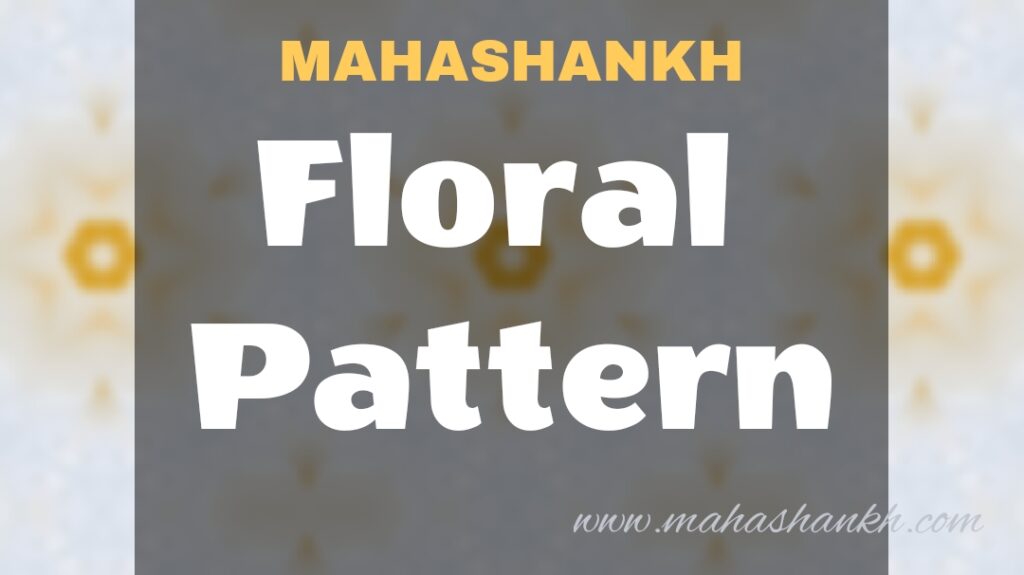
HISTORY OF FLORAL PATTERN
The history of floral patterns in human civilization is a fascinating journey that spans thousands of years and encompasses various cultures and artistic movements. Floral patterns have been used in various forms of art, including textiles, ceramics, paintings, and architecture. Let’s take a brief look at the evolution of floral patterns throughout history:
Ancient Civilizations:
Floral motifs have been found in ancient civilizations such as Egypt, Mesopotamia, and ancient Greece. In these early cultures, floral designs were often incorporated into decorative objects, frescoes, and jewelry. They were associated with nature, fertility, and religious symbolism.
Islamic Art:
During the Islamic Golden Age (8th to 14th centuries), floral patterns became prominent in Islamic art and design. Islamic artists developed intricate geometric and floral motifs, known as arabesques, which adorned textiles, ceramics, and architecture. These patterns were often characterized by a combination of geometric shapes and stylized floral elements.
Renaissance and Baroque Periods:
In Europe, during the Renaissance and Baroque periods (14th to 18th centuries), floral patterns experienced a resurgence. Artists drew inspiration from nature and began incorporating floral designs into paintings, tapestries, and decorative arts. Flowers such as roses, tulips, and lilies were popular subjects, and floral patterns became synonymous with elegance and luxury.
18th and 19th Centuries:
The 18th and 19th centuries witnessed the rise of floral patterns in fashion and interior design. Fabrics with intricate floral designs became fashionable, and floral motifs adorned clothing, upholstery, and wallpapers. This era saw the development of specific floral styles such as chintz, toile de Jouy, and William Morris’ Arts and Crafts movement, which emphasized nature-inspired patterns.
Art Nouveau:
In the late 19th and early 20th centuries, the Art Nouveau movement embraced floral motifs with a new approach. Artists sought to create organic and flowing designs, often incorporating curved lines, stylized flowers, and natural elements. Artists like Alphonse Mucha and René Lalique used floral patterns extensively in their art, jewelry, and decorative objects.
Modern and Contemporary Era:
Floral patterns have continued to evolve and remain relevant in modern and contemporary design. From the Art Deco movement of the 1920s to the floral prints of the 1960s and 1970s, flowers have retained their appeal as a popular motif. Contemporary designers and artists continue to experiment with floral patterns, combining traditional elements with contemporary aesthetics.
Today, floral patterns can be found in various forms, including textiles, wallpapers, digital designs, and even in architectural elements. They continue to symbolize beauty, nature, and the enduring appeal of the natural world in human creativity and expression.
Nature’s Palette: The Artistry and Symbolism of Floral Patterns in Design
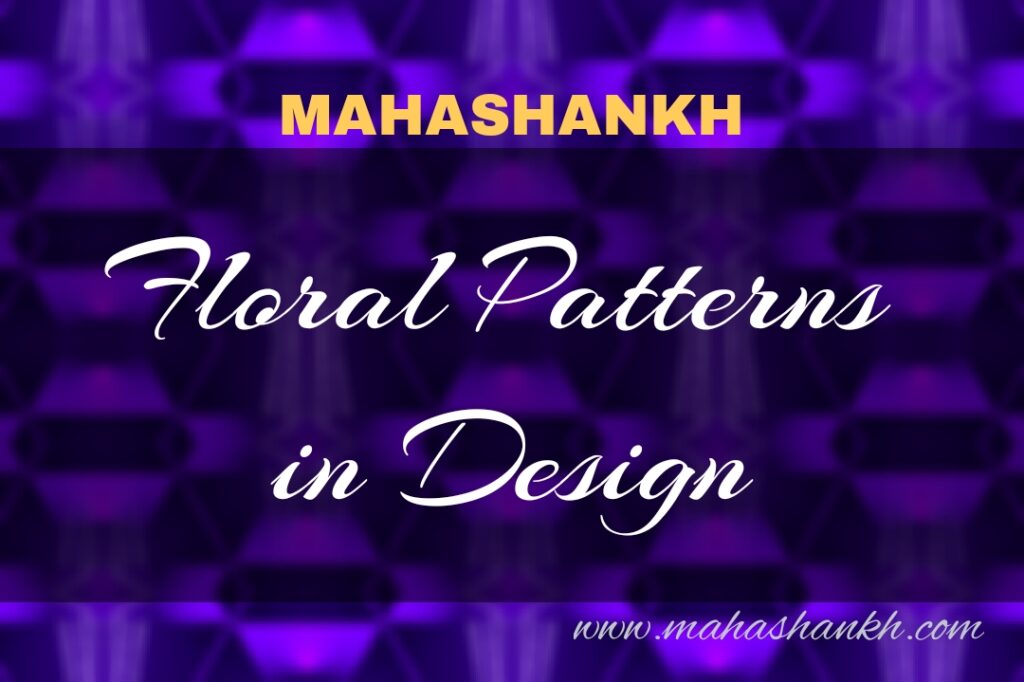
Floral patterns, with their timeless allure and captivating beauty, have been an integral part of design across various artistic disciplines. From fashion and textiles to interior design and beyond, these intricate patterns draw inspiration from the natural world, offering a rich tapestry of symbolism and artistic expression.
A Canvas of Botanical Elegance
Floral patterns serve as a visual ode to nature’s diverse flora, capturing the essence of blooming flowers, leaves, and vines. Designers often turn to the vibrant hues and delicate details found in the natural world, translating them into captivating patterns that evoke a sense of freshness and vitality. Whether adorning clothing, upholstery, or wallpaper, these designs bring a touch of the outdoors into our daily lives.
Timeless Allure and Cultural Significance
The enduring popularity of floral patterns is deeply rooted in their cross-cultural symbolism. Flowers have held diverse meanings throughout history, representing sentiments ranging from love and purity to growth and renewal. By incorporating floral designs into various artistic mediums, creators tap into this rich symbolism, adding layers of meaning and emotional resonance to their work.
Fashion Blossoms: The Evolution of Floral Design
In the realm of fashion, floral patterns have been a constant presence, gracing runways and adorning garments for centuries. From the intricate floral motifs of the Victorian era to the bold, oversized blooms of the 1960s, designers continue to reinvent and reinterpret floral patterns to suit contemporary tastes. The adaptability of floral design allows it to seamlessly transition between vintage charm and modern chic.
Beyond Aesthetics: The Psychological Impact
The influence of floral patterns extends beyond mere aesthetics; these designs have a profound psychological impact. Studies suggest that exposure to nature-inspired patterns, including florals, can evoke positive emotions and reduce stress. The organic shapes and vibrant colors found in floral designs create a connection with the outdoors, promoting a sense of well-being and tranquility.
Craftsmanship Unveiled: Free Crochet Flower Patterns and Flower Templates
For those with a penchant for crafting, free crochet flower patterns and flower templates offer a unique opportunity to engage with floral design on a more personal level. These resources enable individuals to create their own botanical masterpieces, whether through crochet, paper crafting, or other DIY projects. The accessibility of such patterns encourages creative expression and allows enthusiasts to infuse their surroundings with handmade floral beauty.
Public Domain Flowers: A Shared Cultural Heritage
The beauty of floral patterns is not confined to exclusive designs; many flower patterns are available in the public domain. This accessibility allows artists and designers to draw inspiration from a shared cultural heritage, fostering a sense of connection across time and space. Public domain flowers become a universal language of beauty, transcending individual styles and preferences.
In conclusion, the artistry and symbolism of floral patterns in design constitute a celebration of nature’s beauty and a reflection of our deep connection to the natural world. From the runways of high fashion to the comfort of our homes, floral patterns continue to weave a tale of botanical elegance, offering a timeless and universal language that speaks to the heart of design enthusiasts worldwide.
Petals and Prints: A Deep Dive into the Rich History of Floral Design
Floral design, with its intricate patterns and captivating motifs, has a storied history that weaves through the tapestry of human creativity. From ancient civilizations to contemporary design studios, the evolution of floral patterns reflects not only changing aesthetic preferences but also the deep cultural significance attached to the symbolism of flowers.
Ancient Roots: Floral Motifs in Early Civilizations
The roots of floral design can be traced back to ancient civilizations, where flowers held symbolic importance in religious rituals, art, and daily life. In ancient Egypt, for example, lotus flowers symbolized rebirth and the cycle of life. Mesopotamian cultures adorned their textiles and ceramics with floral motifs, celebrating the beauty of the natural world. As trade routes expanded, floral designs became a cross-cultural language, transcending geographical boundaries.
The Renaissance Bloom: Floral Patterns in Art and Fashion
The Renaissance period witnessed a resurgence of interest in nature, and floral designs experienced a renaissance of their own. Artists like Leonardo da Vinci and Botticelli incorporated floral motifs into their masterpieces, while textile designers embraced the beauty of blooming flowers. In the world of fashion, garments adorned with intricate floral patterns became a symbol of opulence and refinement, reflecting the era’s fascination with art, science, and the natural world.
Victorian Extravaganza: The Language of Flowers
Perhaps one of the most iconic periods for floral design was the Victorian era. Victorians developed a sophisticated “language of flowers” known as floriography, where each flower held specific meanings. This symbolism was intricately woven into floral patterns, allowing individuals to convey sentiments and emotions through the language of blooms. Floral patterns adorned everything from clothing to home decor, becoming an integral part of Victorian culture.
Art Nouveau: Organic Forms and Whiplash Lines
As the 19th century gave way to the 20th, the Art Nouveau movement emerged, bringing a fresh perspective to floral design. Characterized by sinuous lines and organic forms, Art Nouveau celebrated the beauty of nature and rejected the rigid structures of the past. Artists like Alphonse Mucha and Louis Comfort Tiffany embraced floral motifs, infusing them with a sense of fluidity and natural grace.
Mid-Century Modern: Bold Blooms and Geometric Harmony
The mid-20th century witnessed a departure from the organic forms of Art Nouveau to the clean lines and geometric shapes of Mid-Century Modern design. Floral patterns during this period often featured bold, oversized blooms set against backgrounds of solid color or simple geometric shapes. Designers like Charles and Ray Eames incorporated floral elements into furniture and textile design, contributing to the distinctive aesthetic of the era.
Contemporary Resurgence: Floral Design in the 21st Century
In the 21st century, floral design has experienced a resurgence in popularity, with contemporary designers embracing a diverse range of styles. From vintage-inspired patterns reminiscent of the past to bold, abstract interpretations, floral design continues to evolve, reflecting the dynamic nature of contemporary tastes.
In conclusion, the rich history of floral design is a testament to the enduring appeal and cultural significance of floral motifs. From ancient civilizations to modern runways, the beauty of petals and prints has transcended time, shaping and reflecting the artistic sensibilities of each era. Today, as we continue to celebrate the artistry of floral design, we pay homage to a tradition that has blossomed through centuries, leaving an indelible mark on the canvas of human creativity.
Fashion Blossoms: How Floral Patterns Have Transformed Style Through the Ages
Fashion is a dynamic canvas that reflects the spirit of an era, and few motifs have endured and evolved as gracefully as floral patterns. From ancient civilizations to the modern catwalks, the transformative power of floral designs on style has left an indelible mark on the world of fashion, offering a perennial connection to nature and an ever-changing expression of beauty.
Ancient Adornments: The Roots of Floral Elegance
As far back as ancient civilizations, floral patterns adorned garments and accessories as symbols of prestige, religious significance, and cultural identity. In ancient Egypt, floral motifs graced garments with depictions of lotus flowers, symbolizing rebirth and regeneration. The artistry of ancient Greek and Roman textiles also featured botanical elements, showcasing an early appreciation for the beauty of nature in fashion.
The Renaissance Garden: A Flourish of Floral Artistry
The Renaissance era witnessed a revival of interest in classical art and nature, leading to a proliferation of floral designs in fashion. Intricate patterns inspired by gardens and botanical illustrations became fashionable, reflecting the era’s fascination with beauty, balance, and the divine. Clothing adorned with lush floral embroidery and rich tapestries became a symbol of wealth and sophistication.
Victorian Opulence: Language of Flowers and Ornate Detailing
The Victorian era marked a zenith for floral fashion, as intricate floral patterns became an essential part of women’s clothing. The “language of flowers” or floriography was a prominent feature, where specific blooms carried nuanced meanings. Dresses were adorned with elaborate floral embroidery and lace, creating a romantic and opulent aesthetic. The delicate floral designs mirrored the societal emphasis on femininity, modesty, and refined elegance.
Art Nouveau: Whimsical Blooms and Organic Lines
The turn of the 20th century brought forth the Art Nouveau movement, introducing a new approach to floral patterns. Characterized by sinuous lines and organic forms, Art Nouveau celebrated the inherent beauty of nature. Fashion designers embraced whimsical floral prints and motifs, integrating them into garments that echoed the movement’s emphasis on flowing, natural shapes. Alphonse Mucha’s ethereal floral illustrations became emblematic of the era’s design ethos.
Mid-Century Modern: Bold Blooms and Graphic Simplicity
In the mid-20th century, floral patterns underwent a radical transformation in line with the geometric aesthetic of Mid-Century Modern design. Bold, oversized blooms with simplified shapes and vibrant color palettes adorned clothing, reflecting the dynamic spirit of the post-war era. Designers like Christian Dior and Emilio Pucci incorporated floral motifs into their iconic creations, contributing to the visual vocabulary of the time.
Contemporary Bloom: Diversity and Individual Expression
In the contemporary fashion landscape, floral patterns continue to captivate designers and consumers alike. The 21st century has witnessed a fusion of styles, with floral patterns ranging from vintage-inspired classics to bold, abstract interpretations. High-end fashion houses and independent designers alike draw inspiration from nature, creating garments that celebrate the timeless allure of floral motifs.
Conclusion: A Blossoming Legacy
The transformative journey of floral patterns through the ages reflects the enduring fascination with nature’s beauty and the ever-evolving tastes of fashion. From ancient symbolism to modern interpretations, floral designs have not only adorned garments but have also woven themselves into the fabric of cultural expression. As we continue to witness the bloom of floral patterns on the runways and in our wardrobes, we celebrate a legacy that transcends time, embodying the essence of style and the eternal allure of nature. Fashion, indeed, continues to blossom through the petals of floral patterns, ensuring a timeless connection between the runway and the natural world.
From Garden to Garment: The Evolution of Floral Patterns in Textile Design
Textile design, with its rich tapestry of colors and patterns, serves as a canvas where the beauty of nature unfolds. Among the myriad of designs, floral patterns stand out as a timeless and ever-evolving expression of the seamless connection between the natural world and the world of fashion. From ancient textile traditions to contemporary innovations, the evolution of floral patterns in textile design is a journey that weaves together craftsmanship, cultural influences, and artistic inspiration.
Ancient Roots: Early Bloomings in Textile Design
The roots of floral patterns in textile design can be traced back to ancient civilizations where intricate floral motifs adorned fabrics with symbolic significance. In civilizations such as Mesopotamia and ancient China, floral patterns were not merely decorative but held cultural and religious meanings. These early designs often drew inspiration from native flora, creating a link between the garments and the natural environment.
The Silk Road: Floral Patterns in Global Trade
The Silk Road played a pivotal role in the exchange of ideas, cultures, and textiles. As trade routes flourished, so did the diversity of floral patterns in textile design. Exotic blooms from different corners of the world found their way onto fabrics, creating a fusion of styles that resonated across cultures. Textile design became a visual language that transcended borders, reflecting the interconnectedness of the world.
Renaissance Revival: Botanical Artistry Unleashed
During the Renaissance, textile design experienced a renaissance of its own. The revival of classical art and a renewed interest in nature inspired textile artists to create intricate floral patterns reminiscent of botanical illustrations. The craftsmanship of this era showcased meticulous attention to detail, with flowers and foliage meticulously woven or printed onto luxurious fabrics, turning garments into works of art.
Victorian Florals: Romanticism and Symbolic Expression
The Victorian era is synonymous with elaborate and romantic floral patterns in textile design. The fascination with the “language of flowers” led to garments adorned with carefully selected blooms, each carrying nuanced meanings. The symbolism of flowers became a form of expression in textiles, allowing individuals to convey sentiments through their clothing. Delicate embroidery and lacework further elevated the artistry of Victorian florals.
Art Deco Elegance: Geometric Harmony and Botanical Motifs
The Art Deco movement of the early 20th century brought a shift in aesthetic, with a departure from organic forms to geometric simplicity. Floral patterns during this period often featured stylized and abstracted botanical motifs, blending the beauty of nature with the precision of geometric design. These patterns adorned textiles in fashion, upholstery, and interior design, contributing to the glamorous elegance of the era.
Mid-Century Modern: Playful Blooms and Vibrant Colors
In the mid-20th century, floral patterns took on a bold and playful character. The Mid-Century Modern movement embraced vibrant colors, oversized blooms, and graphic simplicity. Textile designers like Lucienne Day and Maija Isola created iconic floral prints that adorned everything from dresses to home furnishings. The juxtaposition of bold florals with clean lines became emblematic of the era’s design ethos.
Contemporary Blossoms: Innovation and Sustainability
In the contemporary era, textile designers continue to draw inspiration from nature, creating floral patterns that reflect both tradition and innovation. Digital printing techniques, sustainable practices, and a renewed emphasis on craftsmanship have reshaped the landscape of floral textile design. Designers now explore new materials, textures, and production methods, offering a diverse range of floral patterns that cater to modern sensibilities.
Conclusion: A Flourishing Legacy
The evolution of floral patterns in textile design is a testament to the enduring allure of nature’s beauty and the adaptability of artistic expression. From ancient symbolism to contemporary innovation, floral patterns have graced textiles with elegance, meaning, and cultural significance. As we witness the continued blooming of floral designs on fabrics, from the delicate craftsmanship of the past to the cutting-edge techniques of the present, we celebrate a legacy that connects the garden to the garment, creating a timeless bridge between the natural world and the realm of fashion.
Floral Fantasia: Unveiling the Enduring Popularity of Botanical Prints
In the world of design, few elements have captivated the imagination and endured through the ages like botanical prints. From the delicate brushstrokes of early illustrators to the vibrant digital reproductions of today, botanical prints continue to weave a tapestry of beauty that transcends time and trends. This enduring popularity is a testament to the timeless allure and universal appeal of the botanical world.
A Symphony of Nature’s Palette
Botanical prints are more than mere representations of plants; they are a celebration of nature’s intricate beauty. From the elegant curves of leaves to the delicate veins of petals, botanical prints offer a detailed glimpse into the world of flora. Early botanical illustrators, such as Maria Sibylla Merian and Pierre-Joseph Redouté, meticulously captured the essence of plants, creating masterpieces that merged scientific precision with artistic finesse.
Scientific Exploration and Artistic Expression
The history of botanical prints is closely intertwined with the scientific exploration of plant life. During the Age of Exploration, as new plants were discovered and cataloged, botanical illustrations became invaluable tools for documenting and sharing this newfound knowledge. Illustrators collaborated with botanists to create visually stunning and scientifically accurate depictions of plants, contributing to both the realms of art and science.
The Golden Age of Botanical Illustration
The 18th and 19th centuries are often considered the golden age of botanical illustration. Artists during this period produced sumptuous volumes filled with meticulously rendered botanical prints. These works, such as those by George Ehret and James Sowerby, were not only scientific records but also coveted art pieces, collected by enthusiasts and institutions alike. The attention to detail and vibrant colors in these prints continue to inspire contemporary botanical artists.
Victorian Romance: Botanical Prints in Everyday Life
The Victorian era witnessed a surge in interest in the natural world, and botanical prints became a ubiquitous part of everyday life. From wallpaper and textiles to china and stationery, floral motifs adorned a myriad of household items. The Victorians’ fascination with floriography, or the language of flowers, further heightened the popularity of botanical prints as each bloom conveyed a specific sentiment. The infusion of nature into domestic spaces became a symbol of refinement and gentility.
Art Nouveau: Organic Forms and Whimsical Botanicals
The Art Nouveau movement of the late 19th and early 20th centuries brought a new aesthetic to botanical prints. Characterized by flowing lines and organic forms, Art Nouveau artists like Alphonse Mucha seamlessly integrated botanical elements into their designs. Whimsical and stylized, these prints reflected the movement’s celebration of natural beauty and its departure from the rigid structures of the past.
Contemporary Resurgence: Botanical Prints in the Digital Age
In the digital age, botanical prints have experienced a resurgence in popularity. Advances in technology have allowed for the reproduction and dissemination of classic botanical illustrations on a global scale. Additionally, contemporary artists and designers continue to draw inspiration from botanical motifs, creating new interpretations that blend traditional elegance with modern flair. Botanical prints have found their place not only in traditional art spaces but also in digital media, fashion, and interior design.
Beyond Aesthetics: The Symbolism of Botanical Prints
The enduring popularity of botanical prints goes beyond their aesthetic appeal. Each plant depicted carries layers of symbolism and cultural significance. From the romantic associations of roses to the spiritual symbolism of lotus flowers, botanical prints have the power to evoke emotions and convey meaning. This depth of symbolism ensures that botanical prints remain relevant and resonant across different cultures and periods.
Conclusion: A Timeless Reverie in Petals and Leaves
In the enchanting world of floral fantasia, botanical prints stand as perennial ambassadors of the natural world. Their enduring popularity is a testament to the intrinsic connection between humans and plants, as well as the timeless fascination with the delicate intricacies of flora. As botanical prints continue to bloom across various artistic mediums, they serve as a reminder that, in the language of petals and leaves, there is a timeless reverie that transcends the boundaries of time and culture, captivating hearts and imaginations for generations to come.
In Full Bloom: The Cultural Significance of Floral Patterns in Art and Fashion
Floral patterns, with their vibrant hues and intricate designs, have held a profound cultural significance throughout history. From the canvas of fine art to the runways of high fashion, the language of flowers has transcended mere aesthetics, weaving a rich tapestry of symbolism, tradition, and artistic expression.
The Artistic Tapestry: Blooms on Canvas
Floral patterns have been a recurring motif in fine art, serving as a visual language that communicates more than just the beauty of nature. Renowned artists like Vincent van Gogh, Claude Monet, and Georgia O’Keeffe have immortalized flowers on canvas, capturing not just their physical essence but also the emotional and symbolic resonance they hold. In art history, floral motifs often symbolize life, growth, and the transient nature of beauty.
Floriography: The Language of Flowers Unveiled
The Victorian era introduced the concept of floriography, a symbolic language of flowers that allowed individuals to express sentiments and emotions through floral arrangements and patterns. Each flower held a specific meaning, turning floral patterns into a subtle and sophisticated form of communication. Roses, for example, symbolized love, while lilies represented purity and orchids conveyed luxury. The use of floriography added depth and nuance to floral patterns, making them more than just decorative elements.
Global Influence: Cross-Cultural Symbolism
Floral patterns have a universal appeal that transcends cultural boundaries. Different cultures have imbued flowers with unique meanings and significance. In Chinese art, the peony symbolizes wealth and honor, while the cherry blossom holds deep cultural importance in Japan, signifying the transient nature of life. The lotus flower, revered in Hinduism and Buddhism, is a symbol of purity and enlightenment. As floral patterns travel across cultures, they carry with them a rich tapestry of diverse meanings.
Fashion as a Canvas: Blooms on the Runway
In the realm of fashion, floral patterns have become synonymous with timeless elegance and femininity. Designers throughout history have drawn inspiration from nature’s bounty to create garments that celebrate the beauty of blooms. From delicate embroidery on Victorian gowns to bold, oversized prints on modern dresses, floral patterns continue to dominate the runway, embodying a sense of romance, grace, and vitality.
Cultural Revival: Traditional Motifs in Modern Fashion
In recent years, there has been a revival of interest in traditional floral motifs from various cultures. Designers are increasingly incorporating indigenous floral patterns into their collections, celebrating the rich cultural heritage and storytelling embedded in these designs. This move towards inclusivity not only adds depth to fashion but also fosters an appreciation for the diverse traditions that have influenced the world of floral patterns.
Beyond Beauty: The Psychological Impact of Florals
The cultural significance of floral patterns extends beyond their visual appeal. Studies have shown that exposure to floral designs can have positive psychological effects, evoking feelings of joy, calmness, and well-being. The organic shapes and vibrant colors found in floral patterns create a connection to nature, offering a respite from the demands of modern life. In this way, floral patterns serve not only as artistic expressions but also as sources of emotional and mental rejuvenation.
Environmental Awareness: Sustainable Blooms in Fashion
In the contemporary era, there is a growing awareness of the environmental impact of the fashion industry. Designers are exploring sustainable practices, and this extends to the use of floral patterns. Sustainable fashion brands are incorporating eco-friendly materials and ethical production methods into their floral designs, fostering a harmonious relationship between fashion and nature.
Conclusion: Blooming Across Time and Culture
In full bloom, floral patterns continue to enchant and inspire, transcending the boundaries of time and culture. From the brushstrokes of artists to the catwalks of fashion, the cultural significance of floral patterns is a testament to their enduring power as symbols of beauty, emotion, and connection to the natural world. As we continue to witness the blooming of floral patterns in art and fashion, we celebrate a language that speaks to the heart, carrying with it the rich tapestry of human history and the timeless allure of nature’s blossoms.
Beyond Aesthetics: The Psychological Impact of Floral Patterns in Design
Floral patterns, with their intricate blossoms and vibrant colors, go beyond mere visual appeal; they wield a profound psychological influence on our emotions, well-being, and perception of space. From interior design to fashion, the presence of floral motifs plays a pivotal role in shaping our experiences and fostering positive psychological responses.
Nature’s Therapy: Eliciting Positive Emotions
One of the primary psychological impacts of floral patterns is their ability to evoke positive emotions. Studies consistently show that exposure to nature-inspired patterns, including florals, can lead to feelings of joy, happiness, and relaxation. The organic shapes and colors found in floral designs mimic the beauty of the natural world, triggering a positive psychological response that can uplift mood and reduce stress levels.
Biophilia and Connection to Nature
The concept of biophilia, coined by biologist Edward O. Wilson, suggests that humans possess an innate affinity for nature. Floral patterns in design tap into this intrinsic connection, bringing elements of the outdoors into our living spaces. Whether in the form of wallpaper, upholstery, or clothing, floral motifs create a sense of biophilic harmony, promoting a feeling of being connected to the natural environment even in urban settings.
Cultural Symbolism and Personal Significance
Floral patterns often carry cultural symbolism and personal significance, further enhancing their psychological impact. Different flowers are associated with diverse meanings and emotions. For example, roses may symbolize love and passion, while daisies convey innocence and purity. The choice of floral patterns in design can, therefore, communicate subtle messages and resonate with individuals on a personal and cultural level, contributing to a deeper emotional connection.
Aesthetic Elevation: Enhancing Visual Appeal and Comfort
Beyond their psychological impact, floral patterns contribute to the overall aesthetic appeal of a space or garment. The visual richness and diversity of floral designs create a visually stimulating environment. Moreover, the repetitive and symmetrical nature of floral patterns can contribute to a sense of order and balance, enhancing the overall aesthetic experience and promoting a feeling of comfort and harmony.
Seasonal Influence: Dynamic Responses to Change
Floral patterns are often associated with different seasons, contributing to dynamic psychological responses to environmental changes. Springtime florals may evoke feelings of renewal and vitality, while autumnal blooms might elicit a sense of warmth and nostalgia. The seasonal rotation of floral designs in fashion and interior decor allows individuals to experience a continuous evolution of visual stimuli, adapting to and resonating with the cyclical rhythms of nature.
Color Psychology: Impact of Floral Hues
The colors present in floral patterns also play a crucial role in their psychological impact. Different floral hues can evoke specific emotions; for instance, warm tones like reds and oranges may stimulate energy and passion, while cool tones like blues and greens may promote calmness and tranquility. Designers strategically use color combinations in floral patterns to create desired psychological effects, influencing the emotional ambiance of a space or an ensemble.
Expressing Personal Style and Identity
Beyond their impact on mood and emotions, floral patterns in design serve as a means of self-expression. Individuals often gravitate toward specific floral motifs that resonate with their personal style, cultural background, or memories. The choices we make in incorporating floral patterns into our surroundings or attire become an extension of our identity, allowing us to express our tastes, preferences, and even our emotional states.
Conclusion: Petals of Well-Being and Self-Expression
In the world of design, floral patterns go beyond mere decoration; they are petals of well-being, psychological harmony, and self-expression. From invoking positive emotions to fostering a connection with nature and conveying personal and cultural meanings, floral motifs have a multifaceted impact on the human psyche. As we continue to surround ourselves with the beauty of blossoms in various forms of design, we not only enhance our aesthetic experiences but also nurture a deeper understanding of the intricate interplay between our surroundings and our psychological well-being.
The Language of Flowers: Decoding Symbolism in Floral Print Fashion
Fashion has long been a medium for self-expression and storytelling, and nowhere is this more evident than in the captivating world of floral print fashion. Beyond their aesthetic appeal, floral patterns carry a rich tapestry of symbolism and meaning, creating a silent language of flowers that speaks volumes about personal style, cultural influences, and emotional expression.
Historical Roots: Floriography in Fashion
The practice of assigning meanings to flowers, known as floriography, gained prominence during the Victorian era. In an era marked by strict social codes and restrained expressions of emotion, individuals turned to the language of flowers to convey sentiments that were otherwise unspeakable. This intricate symbolic language found its way into fashion, where each floral pattern became a nuanced message, expressing love, friendship, or even secret admirations.
Rose, Lily, Daisy: Unraveling the Messages
Different flowers bear distinct meanings, and the careful selection of floral patterns allows individuals to convey specific emotions or sentiments through their attire. The rose, for instance, is a timeless symbol of love and passion, while the lily signifies purity and elegance. Daisies, with their innocent charm, represent simplicity and loyalty. As fashion enthusiasts don floral prints, they participate in a silent dialogue, using blossoms as a form of coded expression.
Cultural Significance: Regional Influences in Floral Fashion
Floral symbolism is not confined to a universal language; it is deeply influenced by cultural contexts and regional traditions. In Indian fashion, the use of marigolds in floral prints is not just an aesthetic choice but also a nod to their cultural significance in celebrations and ceremonies. Similarly, the cherry blossom holds profound meaning in Japanese culture, representing the ephemeral nature of life and beauty. Floral print fashion thus becomes a canvas for cultural narratives, preserving and celebrating the symbolism attached to specific blooms.
Seasonal Transitions: The Ever-Changing Language
Floral patterns in fashion are not static; they transition with the seasons, mirroring the cyclical rhythms of nature. Spring may bring forth a burst of blossoms, signifying renewal and growth, while fall may feature deeper, richer hues, echoing the changing foliage. The seasonal rotation of floral prints allows fashion to mirror the dynamic and ever-changing language of flowers, creating a sense of harmony with the natural world.
Emotional Resonance: Personal Expression Through Petals
Beyond cultural and historical meanings, individuals often choose floral prints based on personal connections and emotions. A dress adorned with a specific flower may evoke memories of a cherished garden, a special occasion, or a meaningful relationship. In this way, floral print fashion becomes a canvas for personal narratives, allowing wearers to carry the essence of their stories through the petals and leaves woven into their garments.
Revival of Victorian Elegance: Vintage Florals in Modern Fashion
In recent years, there has been a notable resurgence of Victorian-inspired floral prints in modern fashion. Designers are revisiting the elegance and sophistication of bygone eras, infusing contemporary garments with the timeless charm of vintage florals. This revival not only pays homage to the historical roots of floriography but also introduces a new generation to the expressive and symbolic nature of floral patterns.
Empowerment Through Florals: Breaking Traditions
While floral prints have traditionally been associated with notions of femininity and delicacy, modern fashion has challenged these stereotypes. Designers are now using bold, oversized blooms and unconventional color schemes to create a fresh and empowering interpretation of floral print fashion. This departure from traditional norms allows individuals to express strength, individuality, and a redefined sense of femininity through their floral-clad ensembles.
Conclusion: A Silent Symphony of Blossoms
In the intricate tapestry of fashion, floral prints emerge as a silent symphony of blossoms, each petal and leaf carrying layers of meaning and emotion. From historical roots in floriography to the diverse interpretations across cultures and personal narratives, floral print fashion is a living language that speaks to the heart and soul. As individuals don their favorite floral patterns, they participate in a timeless dialogue, where the language of flowers transcends the confines of words and weaves a narrative of beauty, emotion, and cultural richness.
From Runway to Home: Incorporating Floral Patterns into Interior Design
The marriage of fashion and interior design has been a longstanding affair, with trends seamlessly flowing from the runways into our homes. Among these enduring trends, floral patterns stand out as perennial favorites, bringing a touch of nature’s elegance into our living spaces. As we explore the journey of floral patterns from the runway to home decor, we discover how these blossoming motifs transform interiors into vibrant, inviting havens.
Runway Inspirations: Fashion’s Botanical Affair
Fashion designers have long embraced the allure of floral patterns, using them to convey a sense of romance, whimsy, and sophistication on the runways. From ethereal dresses adorned with delicate blooms to bold statements featuring oversized floral prints, fashion collections have served as a captivating canvas for the artistic interpretation of nature’s beauty. These runway inspirations, in turn, have laid the groundwork for the integration of floral patterns into interior design.
Bringing the Outdoors In: Nature’s Tranquil Influence
Floral patterns play a pivotal role in bringing the outdoors inside, creating a connection with nature within the confines of our homes. Whether through wallpaper, upholstery, or decor accessories, floral motifs infuse living spaces with a sense of tranquility and freshness. The visual representation of blooming flowers, leaves, and vines introduces an element of organic beauty, fostering a calming ambiance that resonates with the therapeutic concept of biophilic design.
Historical Echoes: Victorian Opulence and Beyond
The integration of floral patterns into interior design carries echoes of historical opulence, particularly from the Victorian era. During this period, floral motifs adorned wallpapers, upholstery, and drapery, creating lush, romantic interiors. Today’s designers often draw inspiration from this historical aesthetic, infusing modern spaces with a blend of classic elegance and contemporary flair. The resurgence of vintage-inspired floral patterns allows homeowners to embrace a timeless, sophisticated style within their interiors.
Versatility in Design: Adapting to Various Styles
One of the remarkable features of floral patterns is their versatility, allowing them to seamlessly adapt to various interior design styles. Whether incorporated into a minimalist, Scandinavian-inspired space or a maximalist, bohemian haven, floral patterns can be tailored to suit the mood and personality of the home. The adaptability of these patterns makes them a go-to choice for designers seeking to inject character and warmth into diverse design schemes.
Scale Matters: Bold Statements or Subtle Elegance
The scale of floral patterns plays a crucial role in determining the visual impact within a space. Oversized blooms make a bold statement, turning a wall or furniture piece into a focal point. On the other hand, smaller, dainty florals exude subtlety, adding a touch of elegance and charm without overwhelming the senses. Homeowners can choose the scale of floral patterns based on their design preferences and the desired atmosphere for each room.
Mixing and Matching: Creativity in Composition
Floral patterns encourage creativity in composition, allowing for the artful mixing and matching of different prints. Interior designers often combine various floral patterns within a single space, creating layers of visual interest. The key lies in maintaining a cohesive color palette or theme, ensuring that the diverse floral patterns harmonize rather than clash. This approach adds depth and personality to interiors, showcasing a curated, eclectic aesthetic.
Contemporary Trends: Modern Florals and Sustainable Choices
In contemporary interior design, the evolution of floral patterns extends to modern interpretations and sustainable choices. Designers are exploring abstract, artistic floral prints that deviate from traditional representations, introducing a fresh perspective. Additionally, there is a growing emphasis on sustainable materials and eco-friendly production methods in the creation of floral-patterned decor items, aligning with the broader movement toward environmentally conscious design.
Market OF Floral Patterns
The market for floral patterns is diverse, dynamic, and spans across various industries, including fashion, interior design, textiles, and more. The popularity of floral patterns is enduring, and they continue to be a staple in the world of design and consumer products. Let’s explore the market for floral patterns in different sectors:
1. Fashion Industry:
- Runway Trends: Fashion designers consistently feature floral patterns in their collections, creating seasonal trends that influence consumer preferences.
- Ready-to-Wear: Floral patterns are widely incorporated into ready-to-wear clothing items, including dresses, blouses, skirts, and accessories.
- High-End and Fast Fashion: From luxury brands to fast fashion retailers, floral patterns cater to a broad spectrum of consumers with varying tastes and budgets.
2. Interior Design:
- Home Decor: Floral patterns are extensively used in home decor items such as wallpapers, upholstery, bedding, curtains, and rugs.
- Furniture: Manufacturers incorporate floral patterns into furniture designs, from vintage-inspired to modern and eclectic pieces.
- Accessories: Floral patterns adorn decorative items like cushions, vases, and artwork, allowing homeowners to personalize their spaces.
3. Textile Industry:
- Fabric Production: Textile manufacturers produce a wide range of fabrics featuring floral patterns, catering to the needs of fashion designers, interior decorators, and DIY enthusiasts.
- Quilting and Crafting: Floral patterns are popular in quilting fabrics and crafting materials, appealing to a creative and hobbyist consumer base.
4. Graphic Design and Print Media:
- Graphic Prints: Floral patterns find their way into graphic design for marketing materials, packaging, and promotional items.
- Print Media: Magazines, catalogs, and online platforms feature floral patterns in editorials, advertisements, and lifestyle content.
5. Digital and Technology:
- Digital Platforms: Online marketplaces and digital platforms offer a wide range of digital floral patterns for use in graphic design, web design, and digital products.
- Tech Accessories: Floral patterns are commonly seen on tech accessories such as phone cases, laptop sleeves, and tablet covers.
6. Events and Celebrations:
- Event Decor: Floral patterns are widely used in event decor for weddings, parties, and corporate events, influencing themes and aesthetics.
- Stationery: Invitations, greeting cards, and stationery often feature floral patterns, adding a touch of elegance to communication.
7. DIY and Craft Supplies:
- Crafting Materials: Floral patterns are prevalent in crafting supplies, including scrapbooking paper, stickers, and fabric for DIY projects.
- DIY Fashion: Enthusiasts often use floral patterns in sewing and crafting their own clothing items, accessories, and home decor.
8. Global and Cultural Impact:
- Cross-Cultural Appeal: Floral patterns have a universal appeal but also vary in styles and motifs based on cultural influences and regional preferences.
- Seasonal Variation: The market experiences fluctuations based on seasonal demands, with spring and summer witnessing a surge in popularity for floral patterns.
9. Sustainability and Eco-Friendly Initiatives:
- Sustainable Practices: With an increasing focus on sustainability, there is a growing market for eco-friendly floral patterns, using organic materials and environmentally conscious production methods.
10. Online and Offline Retail:
- E-Commerce Platforms: Online retail platforms offer a vast array of floral-patterned products, making it accessible to a global audience.
- Brick-and-Mortar Stores: Physical stores, from boutiques to department stores, showcase floral-patterned items across different departments.
The market for floral patterns is expansive, catering to a diverse set of consumers who appreciate the timeless beauty, versatility, and emotional resonance that floral designs bring to various products and industries. As design trends evolve, the market for floral patterns continues to adapt, ensuring its relevance in the ever-changing landscape of consumer preferences.
FUTURE OF FLORAL PATTERNS
Predicting the exact future of floral patterns is challenging, as design trends and preferences are ever-changing. However, based on current patterns and emerging influences, we can speculate on potential directions for floral patterns in the future:
- Modern interpretations: Floral patterns are likely to undergo modern interpretations, incorporating innovative techniques and materials. Designers may experiment with unconventional color palettes, abstract representations, and geometric patterns combined with floral elements.
- Sustainability and nature-inspired designs: As environmental concerns continue to grow, floral patterns may align more closely with sustainability and nature-inspired themes. We may see an emphasis on native and endangered flora, botanical accuracy, and an increased use of organic and eco-friendly materials.
- Technological integration: With advancements in technology, floral patterns may merge with digital design and interactive elements. Augmented reality (AR) and virtual reality (VR) could be utilized to create immersive experiences where users can interact with dynamic and evolving floral patterns.
- Fusion of cultural influences: As globalization continues, we can expect floral patterns to incorporate a fusion of cultural influences. Designers may combine traditional floral motifs from different cultures, resulting in unique and eclectic patterns that celebrate diversity and cross-cultural exchange.
- Minimalist and abstract approaches: Minimalism and abstraction have gained popularity in recent years. In the future, floral patterns may undergo a reductionist approach, focusing on simplified forms, clean lines, and negative space. This minimalist aesthetic could be combined with bold colors or monochromatic schemes to create visually striking designs.
- Sustainable digital solutions: With the rise of digital media, we may see the emergence of sustainable digital floral patterns. Designers may explore eco-friendly alternatives to traditional materials by creating digital representations of flowers that can be easily integrated into various media without the need for physical resources.
- Integration of technology and nature: As our connection with technology deepens, floral patterns may incorporate elements of technology seamlessly with nature. This could involve using smart materials that respond to environmental conditions, such as temperature or light, to create dynamic and interactive floral patterns.
Remember, these are speculative trends, and the future of floral patterns will ultimately be shaped by the creativity and imagination of designers, the influence of cultural and societal factors, and the ever-evolving tastes and preferences of consumers.


